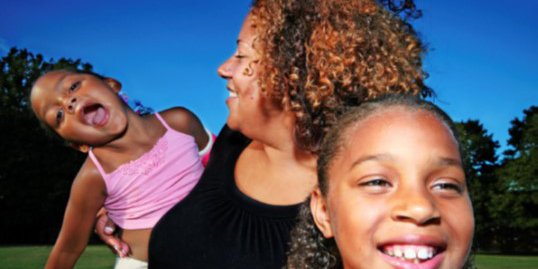An in-depth guide to adoption

The adoption matching process
There are several ways that children and adopters can be matched with each other.
The Adoption team and children’s social workers are aware of all the children locally who are or may become in need of adoption. The needs of the children are regularly considered in relation to the adopters awaiting placement.
Exchange days are held nationally by CoramBAAF which adopters are invited to attend.
Adoption Activity Days are held when adopters have the chance to meet and play with children needing adoption placements. Adopters attending need to be open to considering children with a wide range of needs.
There are other matching services organised through the internet such as Linkmaker and New Family Social, the LGBTQ and support agency for adoption and fostering applicants.
Some adopters have circulated their details to local authorities, but it is recommended that you work with your adoption social worker before you do so.
"It’s not easy! It's stressful and frustrating but once your child arrives it's like none of it happened!" - A Buckinghamshire adopter
Matching agreements
Once approved for adoption, your dedicated social worker will complete a matching agreement with you. During this they will meet with you regularly to discuss how your skills and experiences can match a child's needs.
This agreement will effect the length of time the process takes. This is because we are finding that more prospective adopters are hoping to parent babies than there are babies needing families. Therefore these applicants who state that they can only care for 0 to 3 year olds may wait longer.
Matches are identified
When a possible match is identified the child’s social worker will be given a copy of the adopters assessment report (PAR) to see if what they can offer matches the child’s needs. If you are shortlisted the child’s permanence report (CPR) will be shared with you along with other information such as a carers report and medical. You will then complete a short, medium and long term plan demonstrating how you will the child(ren)’s needs. The family finder and child’s social worker will arrange to come and meet with you together with your social worker. During the visit they will give you more information about the child. Sometimes social workers visit more than one family so they can be sure they have found the best match for the child.
Find out more about the child or children
If you and the child’s social worker still wish to proceed, you will be shown copies of reports and assessments about the child, medical information, and any school reports. You will have the opportunity to speak with the adoption medical adviser, any other specialist involved as well as the child’s foster carers. At any stage as adopters you can withdraw your interest. Throughout the process your adoption social worker will offer support and advice.
Adoption support plan
The child’s agency will prepare an Adoption Support Plan and Adoption Placement Report, which will include the agency’s reasons for proposing the placement, the proposals for adoption support services and any contact.
The report will include the prospective adopters’ views about the proposed placement. The prospective adopter will be given a copy of the report and asked to comment on it.
Agency approval
Adopters’ information is presented to the Adoption Panel for consideration. A prospective match is then agreed by the Agency Decision Maker.
If the child is from another Local Authority then the Adoption Panel will be held in that area.
The Adoption Panel will consider the proposed match and make a recommendation to the Agency Decision Maker as well as give advice on adoption support and contact and parental responsibility. Prospective adopters are invited to attend the Panel Meeting.
The decision of the Agency Decision Maker must be made within seven working days and the prospective adopters informed in writing.
If the decision is that the child is not to be placed with the adopters, there is no mechanism for making representations or to review the decision, though this would clearly need a great deal of discussion.
The child cannot be placed until the adopters have notified the child’s agency in writing that they wish the placement to proceed. Before a child is placed with the adopters, an Adoption Placement Plan will be written, which the adopters will be required to consider.